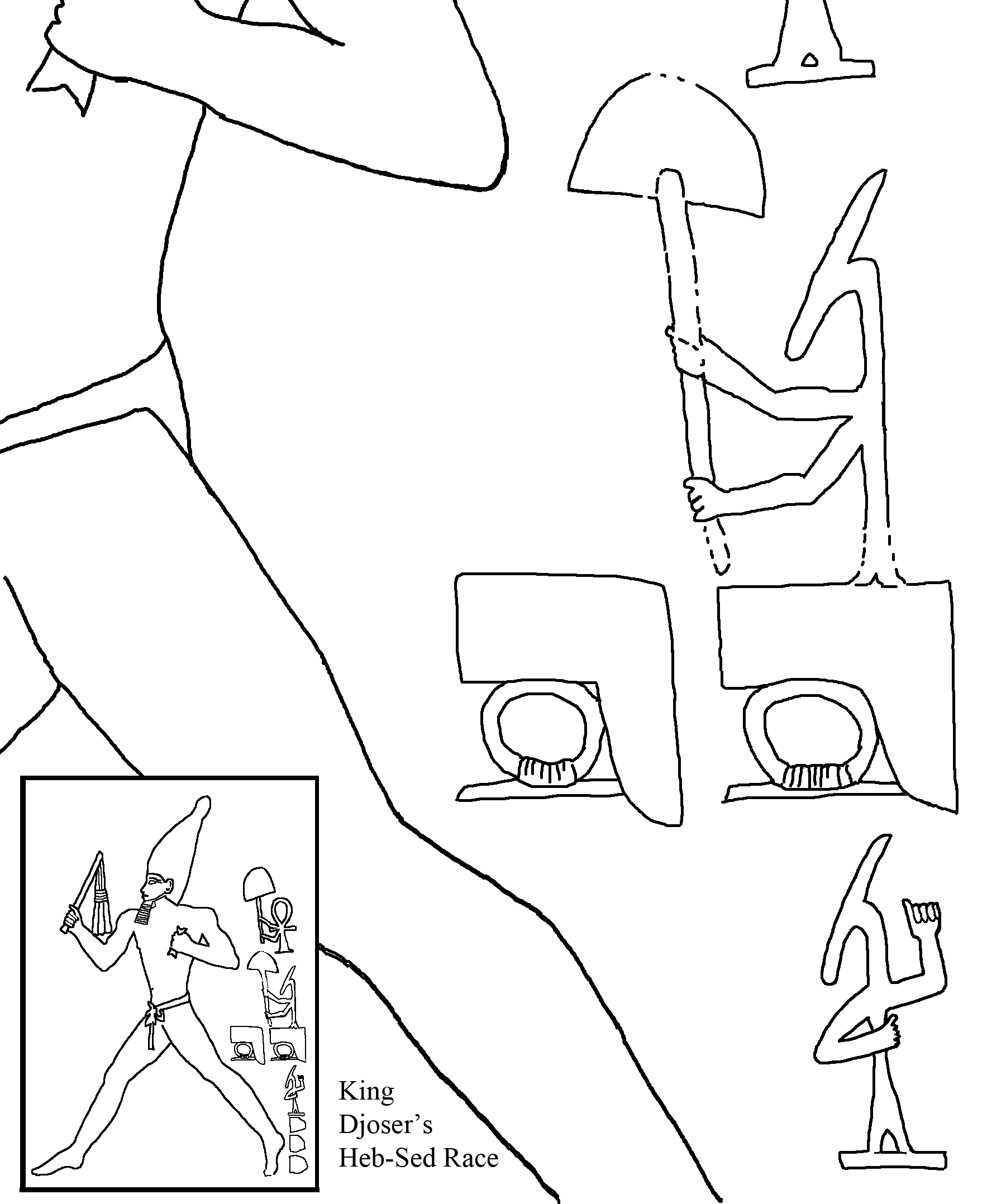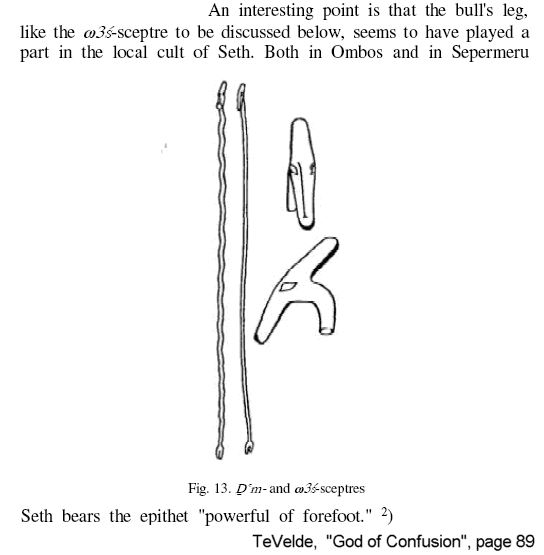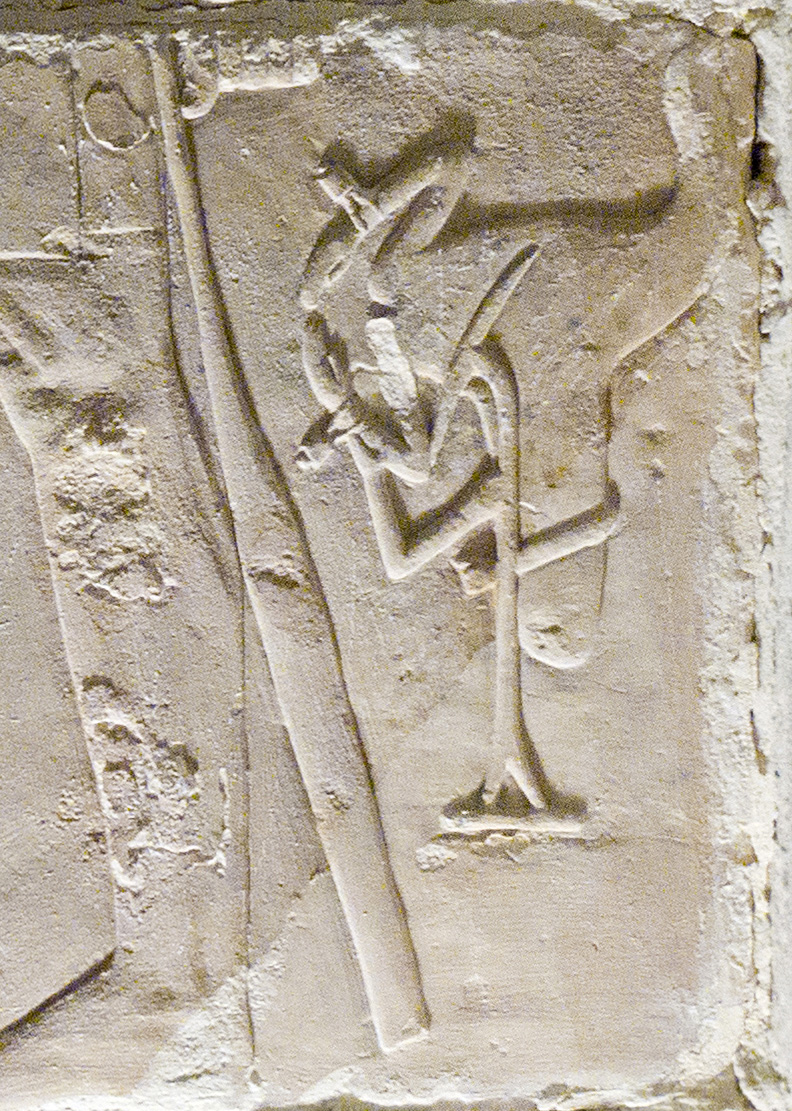

Was scepters shown standing on the hieroglyph denoting earth (ta) and holding up the sky (pet hieroglyph),
from _Symbol and Magic in Egyptian Art_, by Richard H. Wilkinson, page 139
The two-dimensional depiction is understood to represent three dimensions, thus two was scepters represent four.
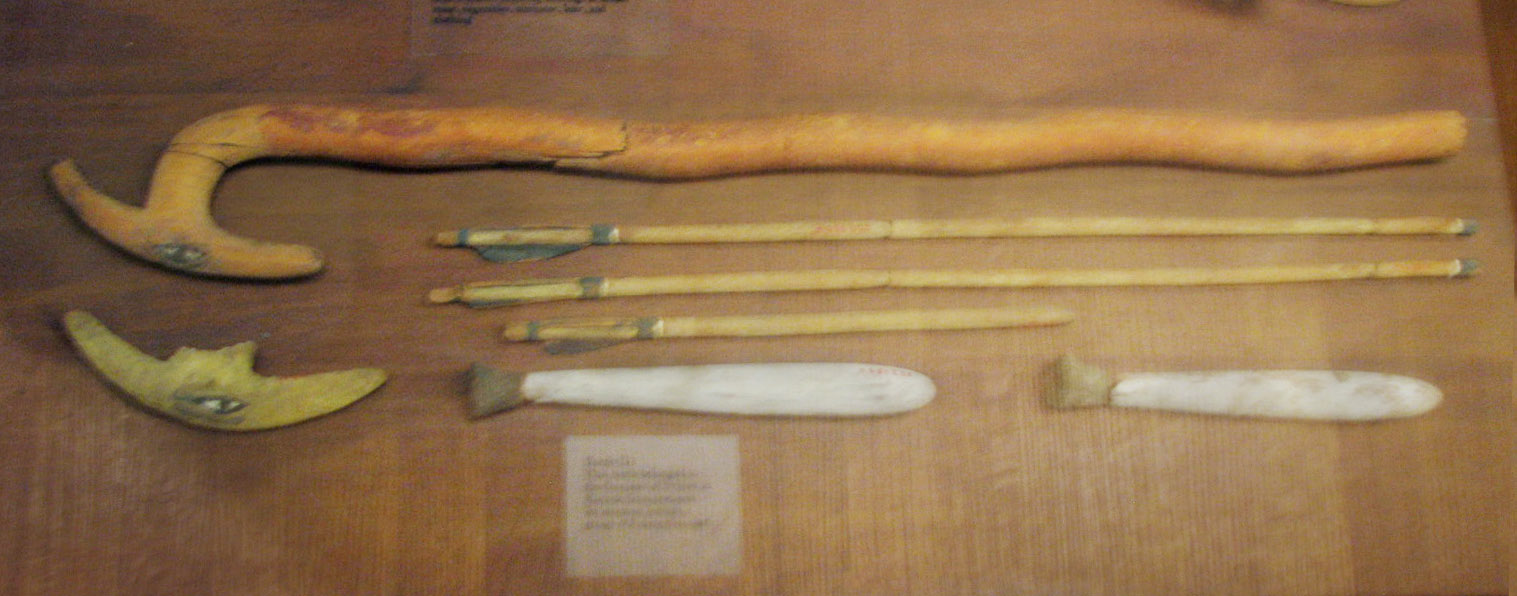

(Fischer's photo shows a fragment with the forked end)
From a late Middle Kingdom burial, Met museum
"subsequently identified as coming from Pit 211 of the 'priests' cemetary' at Deir el Bahri,
belonging to a certain Snwsrt-'nh, no earlier than the end of the Twelfth Dynasty"
from _Notes on Sticks and Staves in Ancient Egypt_, Henry G. Fischer, Metropolitan Museum Journal, 1979
(color photo ©JAL 2008)
| The photographer Heidi Kontkanon found another example of a wooden Was scepter, this one at the Cairo Museum: |
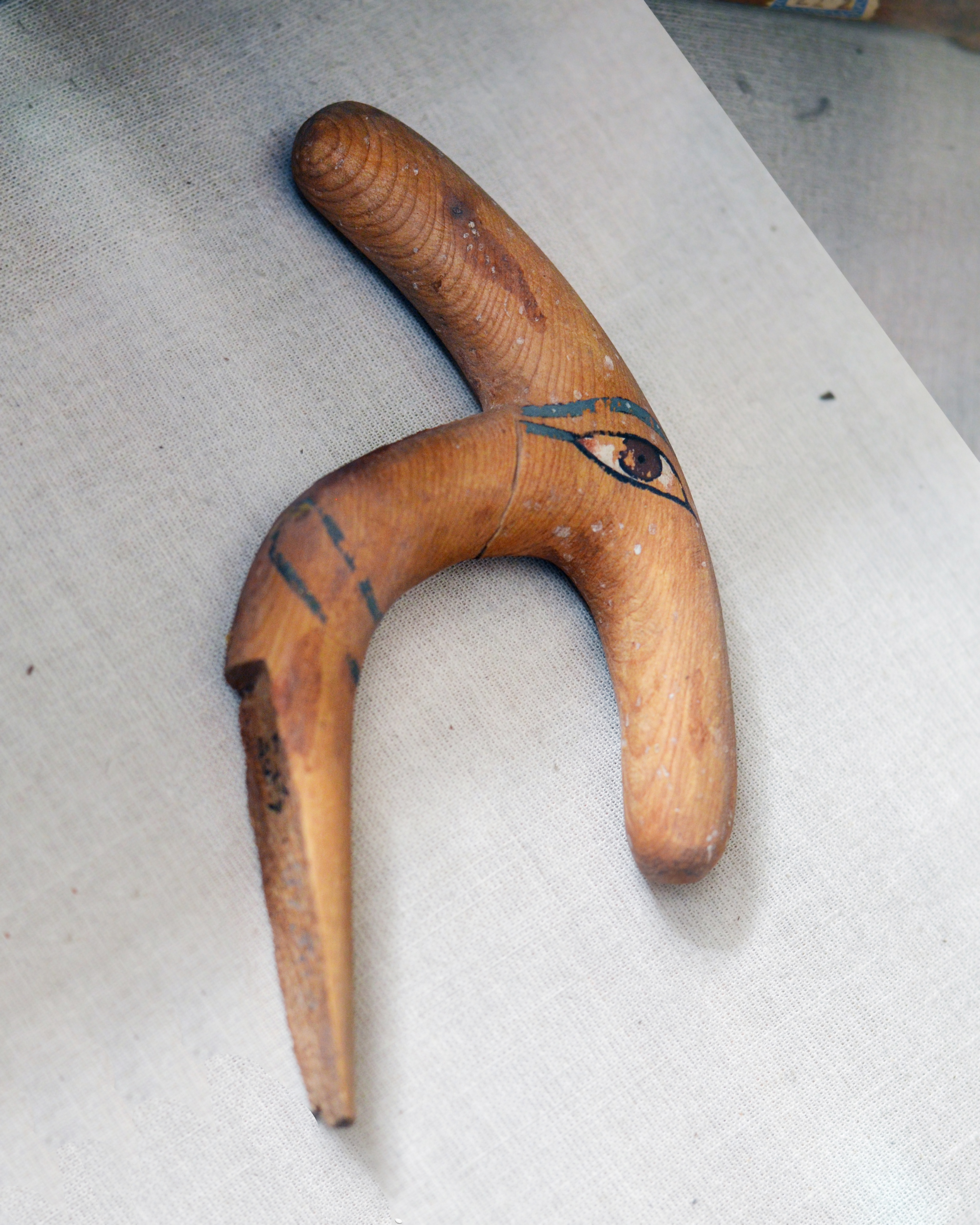
Unfortunately, we have no further info about where it used to be and when it was made.
|
Usually only the gods and occasionally royalty held the was scepter, along with the priesthood, but there are a few rare scenes of commoners with the scepter:
 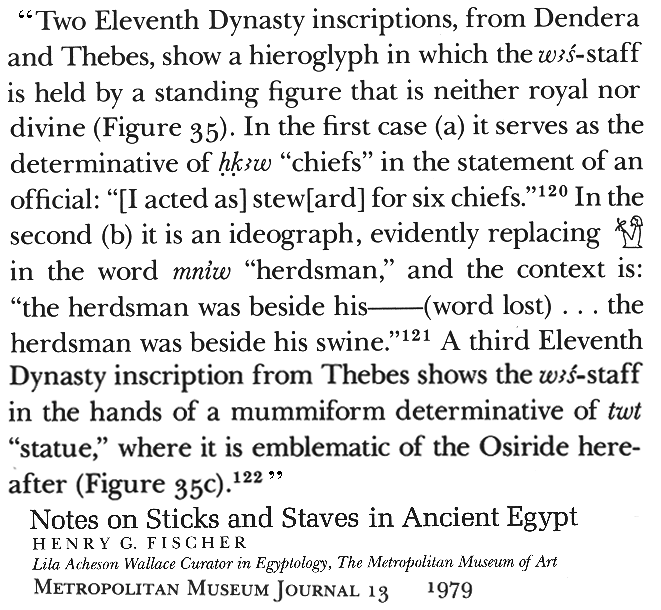 from _Notes on Sticks and Staves in Ancient Egypt_, Henry G. Fischer, Metropolitan Museum Journal, 1979 There's even an example of a craftsman sculpting a was scepter: |
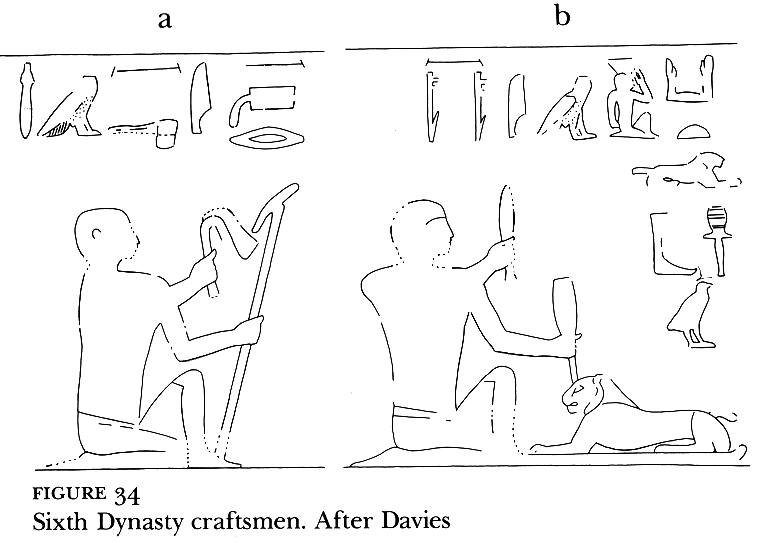
Sixth Dynasty Craftsmen
The was scepter is "among the equipment that is being manufactured for two of the Sixth Dynasty nomarchs at Deir el Gebrawi."
|
Fischer adds that "the w3s-column may have likewise have belonged to the equipment of the local temple" The personified Was, which we see later in Seti I's temple and elsewhere, appears in the third Dynasty pharaoh Djoser's Step Pyramid. Djoser (Netjerykhet) really advanced Egyptian iconography, and introduced ways of depiction that would remain constant until the civilization's end. His Step Pyramid complex serves to ensure that he could celebrate his Heb Seb (Jubilee Festival) for eternity. One of Djoser's personified Was scepters was originally beneath the Step Pyramid, and now is at the Imhotep Museum in Egypt. What is the entity which the Was scepter is holding so securely? Does it represent a physical entity such as a scorpion or a spiritual entity? Perhaps the Was scepter is supporting the Egyptian scorpion goddess Serqet. One of Serqet's roles was to guard coffins, which would be useful at his pyramid. |
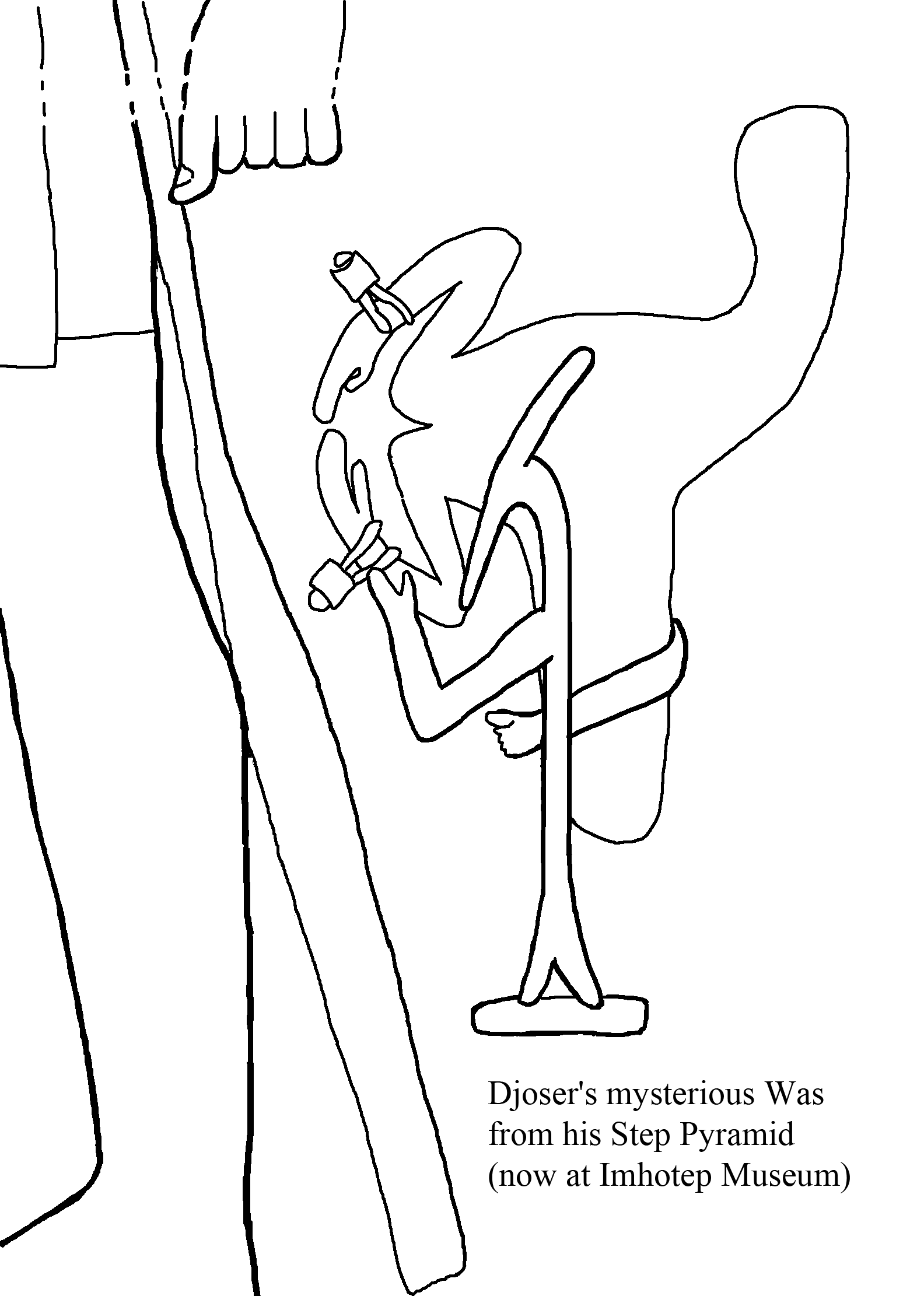
Traced from a detail in a photo by “kairoinfo4u”:
| The following detail comes from a scene in which Djoser is running the Heb Sed race, to prove his fitness to rule: |
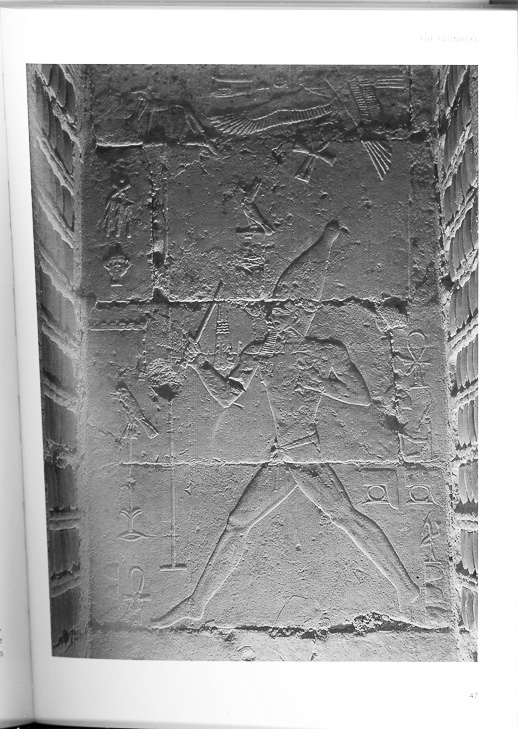
From _The Complete Royal Families of Ancient Egypt_, by Dodson and Hilton
| We see several was scepters. There's a jubilating Was scepter by Djoser's calf! As a bonus, another Was with a fan is about waist high. And an Ankh with a fan is there, along with two Shen, meaning 'eternity', as well. All are there to suggest (and encourage) long life, victory and strength to the ruler. |
